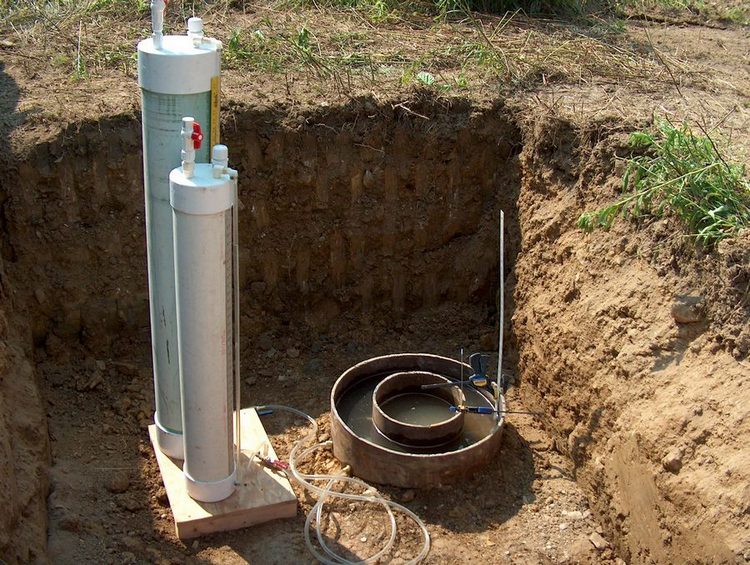 |
| Figure 1. Ring infiltrometer |
Infiltration rate is measured by recording the rate at which water enters the soil. There are numerous methods available to do this, the simplest being a ring infiltrometer (see Figure 1). A solid ring is pushed into the ground and a pond of water sits on the soil (within the ring).
This pond of water is kept at a steady level by a reservoir held above the ring. Recordings of the level of water in the reservoir (with time) give a record of the infiltration rate. To turn the infiltration volume into an infiltration depth the volume of water needs to be divided by the cross-sectional area of the ring.A simple ring infiltrometer provides a measure of the ponded infiltration rate, but there are several associated problems. The first is that by using a single ring a large amount of water may escape around the sides of the ring, giving higher readings than would be obtained from a completely saturated surface. To overcome this a double ring infiltrometer is sometimes used. With this, a second wider ring is placed around the first and filled with water so that the area surrounding the measured ring is continually wet. The second problem is that ponded infiltration is a relatively rare event across a catchment. It is more common for rainfall to infiltrate directly without causing a pond to form on the surface. To overcome this a rainfall simulator may be used to provide the infiltrating water.


No comments:
Post a Comment